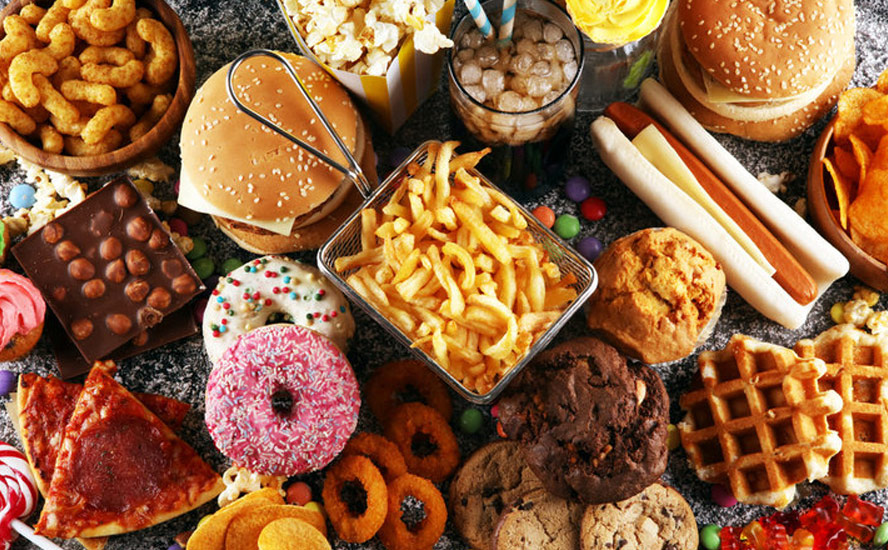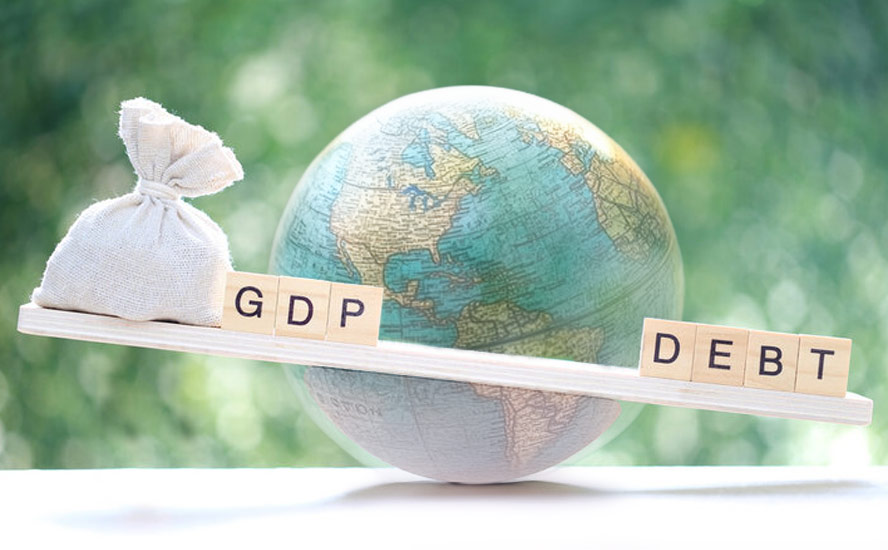Reasons why food inflation isn’t going away – Richard Mills
2023.07.27
By now, we’ve probably surrendered to the fact that food prices will continue to get more expensive around the world.
Here in Canada, the average grocery bill just keeps on rising, and to some households, it’s now borderline unaffordable. For the month of June, Canada’s food inflation was recorded at 9.1% year-over-year, following up on a 9% increase in May.
Compare that to an overall inflation rate of 2.8%, which has slowed down over the previous year, the way food prices are trending seems to be a big problem.
StatCan said via CTV News last month that edible oils and fats, bakery products and cereal products are at the highest year-over-year, with food from restaurants also climbing.

This appears to be a running theme across the world’s major economies. Actually, Canada’s situation may not be so bad when compared against others. In the US, for example, despite inflation falling to its lowest annual rate in more than two years in June, food prices still rose 0.1% on the month.
“We actually have the lowest food inflation rate within the G7 after the United States, and so I know that a lot of people are concerned about food prices, but Canada actually has done fairly well,” Sylvain Charlebois, director of the Agri-Food Analytics Lab at Dalhousie University, recently told CBC.
While many forecast that food prices in Canada (and other places) are expected to come down before the end of the year, they are still sitting well above the historical averages.
And when compared to 2021 — when the global supply was hit by a combination of pandemic disruptions, adverse weather and labour shortages — food inflation remains drastically higher. Since 2021, food prices in Canada have climbed 18% and have stayed stubbornly high, and they did not peak until this past January.

Both RBC Economics and Oxford Economics, via the Financial Times, predicted that while food inflation will continue to ease this year, food prices will not return to levels seen before the pandemic. Oxford sees global food prices remaining 25% higher than during the pre-pandemic decade.

So moving forward, we’re likely to see historically high food prices as they won’t ever revert back to what they were a couple of years ago.
This year’s Canada’s Food Price Report is predicting a 5% to 7% food price increase in 2023, with the most substantial increases in vegetables, dairy, and meat.
“We haven’t seen food prices increase this high in Canada for over 40 years and based on our findings, the increases we have predicted are still quite high but not as high as the increases for 2022,” said Dr. Simon Somogyi, University of Guelph campus lead.
“That may be cold comfort for Canadians, as food prices are already high, but if inflation can come down, it’s possible that we could see price increases for 2023 at or below 5%.”

The US is facing a similar fate, with all food prices expected to increase 6%, within a prediction interval of 5% to 7.1%, according to the US Department of Agriculture.
So why are food prices rising despite measures taken to combat inflation? There’s no single culprit. As RBC economists recently put it — “just about everything” you could think of.
Below, we list out some of the most prominent culprits behind our rising grocery bills:
Low Unemployment
In late 2022, Bank of Canada governor Tiff Macklem said that Canada’s low unemployment rate is not sustainable and is contributing to decades-high inflation.
Economic theory suggests that when businesses struggle to find workers to keep up with demand for goods and services in the economy, they’ll be forced to offer higher wages. In turn, workers will have more money to spend, and thus putting more pressure on prices.
“The tightness in the labour market is a symptom of the general imbalance between demand and supply that is fueling inflation and hurting all Canadians,” he said during a speech in Downtown Toronto.
The latest survey from StatCan shows that the Canadian unemployment rate remains firmly below averages from prior to the pandemic-induced crash. June 2023 saw only the second monthly increase since August of 2022, at 5.4%. Despite this slight recovery, the unemployment rate is still on a downward trend, distancing itself from the 2021 average rate of 7.5%.
The higher unemployment can also be attributed to immigration, which many believe is helping to ease the Canadian job market.
“The rapidly growing labour force, which was also helped along by a rise in participation, will further ease some of the labour shortages reported by employers,” wrote Desjardins economist Royce Mendes in a note.
“The supply of workers coming into Canada has outpaced job growth, which is why the unemployment rate has risen,” Pedro Antunes, chief economist at the Conference Board of Canada, told CBC.

The more telling figure is probably the jobs openings, which far exceeded expectations with 60,000 jobs gained in June. This implies that Canadian food producers are likely facing a growing labour shortage, and will be passing down higher costs to consumers.
A report released in April from RBC’s Climate Action Institute projects that Canada’s agriculture sector is expected to be short some 24,000 general farm, nursery and greenhouse workers over the next decade.
The RBC report projects that, in the short term, Canada will need to attract 30,000 permanent immigrants to establish their own farms or take over existing ones to maintain the agricultural sector’s output.
“This is placing the sector on the cusp of one of the most transformative labour transitions in this country’s history,” Mohamad Yaghi, RBC’s agriculture and climate policy lead, told Global News.
Seizing that moment — or not — could have significant impacts on how much Canadians spend on trips to the grocery store, he added.
‘Greedflation’ of Grocers?
Another explanation for getting larger grocery bills, as some Canadian consumers are led to believe, is that grocers have been using inflation as an excuse to hike prices and pad their own profit margins — a practice they call “greedflation”.
“While the food and beverage retail sector has been facing … cost pressures related to supply chain issues and labour shortages, they have also over the same period recorded an increase in their net income,” the Competition Bureau wrote in a report released on June 13.
This has led some to speculate as to whether Canada’s five largest retailers, who control 80% of the grocery market, are engaged in ‘price gouging’ — which usually occurs following a demand or supply shock, a prime example being the COVID pandemic.
Between 2019 and 2022, the profits of Canada’s three largest grocers went up by $1.2 billion, representing a 50% increase over the four-year period, the study found.
“The fact that Canada’s largest grocers have generally been able to increase these margins — however modestly — is a sign that there is room for more competition in Canada’s grocery industry,” the report suggested.
Industry watchers including Charlebois weren’t at all shocked by the findings. The most valuable part of the study, he said via the Financial Post, is that it recognizes that all levels of government need to be involved in improving the competitive landscape of the Canadian grocery sector.
However, the “greedflation” claims were debunked by respectable sources, including two separate studies by Statistics Canada and the Bank of Canada. In StatCan’s report, it attributed food price inflation to its multiple global causes, with no suggestion Canada’s grocers were taking advantage of the situation.
Russia-Ukraine Conflict
On a global scale, Russia’s invasion of Ukraine might be the single biggest catalyst leading to the high food prices we’re seeing today.
Many developing and emerging market countries rely on food imported from Ukraine and Russia – known as ‘the breadbasket of Europe’ due to the region’s abundance of grains like wheat, barley, corn and soybeans. For wheat, Russia and Ukraine are the largest and seventh largest exporters respectively.
It’s therefore easy to see why food prices could go up as soon as the war broke out.
Within about a week of Russia crossing into eastern Ukraine in the dawn of February 24, 2022, prices for grains like soybeans and some vegetable oils spiked about 50% to 60%, Joseph Glauber, a senior research fellow at the International Food Policy Research Institute (IFPRI), told ABC News.
The Food Price Index, which is used to measure the monthly change in international prices of a basket of food commodities released by the United Nation’s Food and Agriculture Organization, showed a spike in March 2022, but then dropped back down to pre-war levels several months later.

However, IFPRI’s Glauber warned that “We’re in a phase of the market where, at least for the time being, it’s too early to say that we’re out of the woods.”
The war adds complicated dimensions on energy and fertilizer prices, goods that Russia is a large exporter of, which also indirectly affected food prices, Glauber added.
With the war showing no signs of stopping, who knows how long the inflationary pressures on our food supply could drag on. Making matters worse, while food prices reverted to pre-invasion levels for much of the past year, those levels are still a record high compared to the last decade.
The global food supply is in a “tight market” in the coming year, especially as the war continues, Glauber predicted. Plantings in Ukraine are down 35% to 40%, meaning that one of the major exporters in the world is going to produce far less again this year, he said.
In a separate interview with NPR, Glauber noted that about 25 to 35% of Ukraine’s historical wheat production was in areas now occupied by Russia, and over the last year, wheat production has been off by about 35%.
And with Russia pulling out of the Black Sea grain deal, an agreement that had sought to prevent a global food crisis by allowing Ukraine to continue to export, things are looking dire.
“Then we’re right back to a point where very little of that grain that’s in Ukraine would actually make it to the rest of the world,” Glauber said.
Climate Change
Looking past the regional trade disruptions, the impact of climate change on food supply and prices over a longer horizon also cannot be understated. Global warming is influencing weather patterns, causing heat waves, heavy rainfall, and droughts, making it difficult to grow crops in many parts of the world year after year.
According to the World Bank, about 80% of the global population most at risk from crop failures and hunger from climate change are in Sub-Saharan Africa, South Asia, and Southeast Asia, where farming families are disproportionately poor and vulnerable. A severe drought caused by an El Nino weather pattern or climate change can push millions more people into poverty.
The organization also said rising food commodity prices in 2021 were a major factor in pushing approximately 30 million additional people in low-income countries toward food insecurity.
Around harvest time last year, the Wall Street Journal reported that staple crops like corn, rice and Mexican chilies, all of which are vulnerable to hot weather and a lack of water, were seeing yields a fraction of normal levels.
Waterways that typically feed agricultural systems were parched, including Italy’s River Po, which accounts for up to 40% of the country’s agricultural production; and China’s Yangtze River, a crucial life source for crops. France in 2022 experienced the most severe drought ever recorded and China had the driest summer in six decades.
Gustavo Naumann from the International Center on Environmental Monitoring pointed out the interconnection between local market conditions and globally, particularly for crops grown in so-called breadbaskets like South America, central US, Ukraine, India and China. When a drought hits one or more of these areas, there is less supply of staple crops in the global market, which pushes prices up.
Scientists, says the WSJ, forecast there will be an uptick in the frequency and severity of droughts, as temperatures continue to rise and that means economies are going to have to brace themselves as droughts can threaten global food security.
So far in 2023, those predictions seem to be “right on the money.”
Take what’s happening in Kansas as a harbinger. The state normally produces far more wheat than any other state, but Kansas wheat farmers will reportedly reap their smallest harvest in more than 60 years, the result of a two-year drought that has withered the crop. This is concurrent with what is the worst growing condition in the US in more than three decades.
Things are so bad, flour mills will likely have to buy wheat grown in eastern Europe.
While rainfall levels have improved after hot and dry conditions earlier this year, the weather is expected to flip again across the Midwest into early August, just as corn and soybean crops go through critical development stages, according to Arlan Suderman, chief commodities economist at brokerage StoneX.

The Department of Agriculture forecasts that durum wheat output will fall 16% this year, with other spring varieties down 1%.
Transport issues are further compounding food security concerns. Water levels on the Mississippi and Ohio rivers are falling for a second straight year, raising the prospect of shipping problems on crucial freight routes.
“I would be surprised if global food prices do not start increasing again after over a year of decreasing,” Caitlin Welsh, a food expert at the Center for Strategic and International Studies in Washington, told Bloomberg. “We’re experiencing multiple threats to agriculture markets.”
Extreme heat is also engulfing huge swaths of other continents.
Right now, it’s so hot in southern Europe that cows are producing less milk and tomatoes are being ruined. Grain harvests will be much smaller too after struggling with drought.
Droughts have meant that grains production in Italy, Spain and Portugal will be as much as 60% lower than last year, contributing to possibly the EU’s worst grain harvest in 15 years, according to farm lobby Copa and Cogeca.
While the full extent of the damage will depend on how long the unfavorable conditions persist, there are already clear signs of destruction in fruit and vegetables in southern Europe, which supplies much of the continent.
In Sicily, some tomatoes have ominous-looking black rings, the result of a so-called blossom end rot, when extreme weather renders plants calcium-deficient.
The temperatures have sped up ripening or caused heat burns on everything from grapes to melons, apricots and aubergines. Bee activity and pollination is affected and wheat production is down, according to farmers group Coldiretti.
“This is not just a regular hot summer,” said Lorenzo Bazzana, an agronomist at Coldiretti. “They say plants should adapt to the climate changes, but we are talking about cultures that evolved slowly over thousands of years, they cannot adjust to a climate that keeps changing so quickly and so dramatically.”
In Asia, the yields from China’s rice fields are at risk, as high temperatures will likely force the early ripening of the crop. Prices for rice in Asia recently reached a two-year high as importers built up inventories.
China Becoming Net Importer
If the weather-related events are not problematic enough, Asian economies stockpiling food supplies will surely make things worse.
China, arguably the world’s biggest consumer, has already been increasing its reliance on food imports over the past two decades, prompting fears of disruptions and imbalances to the global supply.
With less than 10% of the planet’s arable land, China produces one-fourth of the world’s grain and feeds one-fifth of the world’s population, according to the Food and Agriculture Organization.
Data from the country’s National Bureau of Statistics showed that in 2022, its grain output reached a record high of 686.53 million tons despite delayed plantings, extreme weather and COVID-19 disruptions.
China currently ranks first globally in producing cereals (such as corn, wheat, and rice), fruit, vegetables, meat, poultry, eggs, and fishery products.
Yet, the nation has been a net importer of agricultural products since 2004. Today, it imports more of these products, including soybeans, corn, wheat, rice, and dairy products, than any other country, the bureau’s statistics show.

Between 2000 and 2020, the country’s food self-sufficiency ratio decreased from 93.6% to 65.8%, meaning it has shifted away from domestic production over that period. Changing diet patterns have also driven up China’s imports of edible oils, sugar, meat and processed foods. In 2021, its edible oil import-dependency ratio reached nearly 70%, which is almost as high as its crude oil import dependence.
According to the Council on Foreign Relations, an American think tank, a primary factor has been Chinese people’s increasingly sophisticated dietary demands, driven by a growing city-dwelling middle class pursuing safer, more diverse and higher-quality food. Concerns about food safety in particular have increased demand for imports.
Chinese leaders also consider food security an integral part of national security, with laws requiring the state to take comprehensive measures to ensure food security, safety and quality, the CFR pointed out.
As such, it’s not hard to connect the dots that all the food “hoarding” may have to do with China’s strategy of leveraging against the major food exporters like the US. But this would indirectly cause food prices to surge, much like China’s stockpiling of mineral resources.
That crisis isn’t just about having enough to eat. It’s about having enough food produced domestically to minimize reliance on anyone else, President Xi Jin Ping once told a high-level Communist Party meeting.
India’s Ban on Rice Exports
Another Asian powerhouse, India, recently dropped a bombshell on the global markets by announcing that it would be stopping all exports of non-Basmati white rice — a staple food item for about half of the world’s population.
Such a move, according to an official government statement, would help ensure “adequate availability” of non-basmati white rice in India, as well as “allay the rise in prices in the domestic market.”
The South Asian nation is the world’s leading rice exporter, accounting for more than 40% of the global rice trade, as well as the second-largest producer after China.
Rough rice futures rose 1% higher to stand at $15.8 per hundredweight following India’s announcement. Many believe that the elevated prices could shoot even higher, compounding the effects from the country’s previous ban on shipments of broken rice.
“Global rice [supplies] would drastically tighten … since the country is the world’s second top producer of the food staple,” Eve Barre, ASEAN economist at trade credit insurer Coface, told CNBC.
“In addition to a reduction in global rice supply, panic reactions and speculation on global rice markets would exacerbate the increase in prices,” added Barre.
Prior to the announcement, prices were already hovering at decade highs, in part due to tighter supplies when the staple became an attractive alternative as prices of other major grains surged following Russia’s invasion of Ukraine.
Also contributing to the decade-high prices are the aforementioned weather impacts. Nearly 90% of the water-intensive crop is produced in Asia, where the El Nino weather pattern usually brings lower rainfall. However, heavy rain in northern parts of India over the last few weeks has damaged newly planted crops in the region.

DBS Bank estimates that rice inflation has already accelerated from an average of 6% year-on-year last year to nearly 12% in June 2023.
The export ban could also exacerbate food insecurity for countries heavily reliant on rice, agriculture analytics firm Gro Intelligence predicted in a report published before India’s announcement.

“Top destinations for Indian rice include Bangladesh, China, Benin, and Nepal. Other African countries also import a large amount of Indian rice,” Gro Intelligence’s analysts wrote.
According to India’s Ministry of Consumer Affairs, non-basmati white rice currently constitutes about 25% of the nation’s rice exports. Cutting this supply off from the rest of the world would only increase prices further.
Richard (Rick) Mills
aheadoftheherd.com
Subscribe to my free newsletter
Legal Notice / Disclaimer
Ahead of the Herd newsletter, aheadoftheherd.com, hereafter known as AOTH.
Please read the entire Disclaimer carefully before you use this website or read the newsletter. If you do not agree to all the AOTH/Richard Mills Disclaimer, do not access/read this website/newsletter/article, or any of its pages. By reading/using this AOTH/Richard Mills website/newsletter/article, and whether you actually read this Disclaimer, you are deemed to have accepted it.
Any AOTH/Richard Mills document is not, and should not be, construed as an offer to sell or the solicitation of an offer to purchase or subscribe for any investment.
AOTH/Richard Mills has based this document on information obtained from sources he believes to be reliable, but which has not been independently verified.
AOTH/Richard Mills makes no guarantee, representation or warranty and accepts no responsibility or liability as to its accuracy or completeness.
Expressions of opinion are those of AOTH/Richard Mills only and are subject to change without notice.
AOTH/Richard Mills assumes no warranty, liability or guarantee for the current relevance, correctness or completeness of any information provided within this Report and will not be held liable for the consequence of reliance upon any opinion or statement contained herein or any omission.
Furthermore, AOTH/Richard Mills assumes no liability for any direct or indirect loss or damage for lost profit, which you may incur as a result of the use and existence of the information provided within this AOTH/Richard Mills Report.
You agree that by reading AOTH/Richard Mills articles, you are acting at your OWN RISK. In no event should AOTH/Richard Mills liable for any direct or indirect trading losses caused by any information contained in AOTH/Richard Mills articles. Information in AOTH/Richard Mills articles is not an offer to sell or a solicitation of an offer to buy any security. AOTH/Richard Mills is not suggesting the transacting of any financial instruments.
Our publications are not a recommendation to buy or sell a security – no information posted on this site is to be considered investment advice or a recommendation to do anything involving finance or money aside from performing your own due diligence and consulting with your personal registered broker/financial advisor.
AOTH/Richard Mills recommends that before investing in any securities, you consult with a professional financial planner or advisor, and that you should conduct a complete and independent investigation before investing in any security after prudent consideration of all pertinent risks. Ahead of the Herd is not a registered broker, dealer, analyst, or advisor. We hold no investment licenses and may not sell, offer to sell, or offer to buy any security.
Legal Notice / Disclaimer
Ahead of the Herd newsletter, aheadoftheherd.com, hereafter known as AOTH.Please read the entire Disclaimer carefully before you use this website or read the newsletter. If you do not agree to all the AOTH/Richard Mills Disclaimer, do not access/read this website/newsletter/article, or any of its pages. By reading/using this AOTH/Richard Mills website/newsletter/article, and whether you actually read this Disclaimer, you are deemed to have accepted it.




























